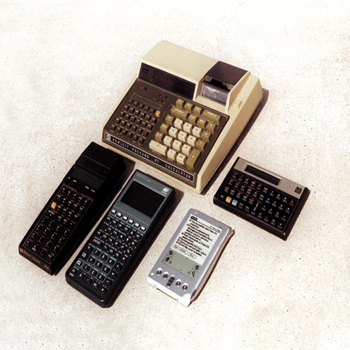Business Management
Sign Financing
Does a high obsolescence factor make a sign lease more desirable?
Published
18 years agoon

Does a high obsolescence factor make a sign lease more desirable? By Tim Brosnahan Why lease a sign to your customer? Leasing affords your customer tax benefits: full deductibility, accelerated deductions, Alternative Minimum Tax (AMT) and Accelerated Cost Recovery System (ACRS) for depreciation. Non-tax benefits include: "full service" maintenance, "full service" bundling of services, convenience, conservation of working capital, 100% financing, fixed-rate financing over the whole term with escalated payment options, an additional financing source, use of the sign without liability risks of ownership or "title," and off-balance-sheet financing. Remember the key is whether the lessee is profitable and paying taxes. Obsolescence Typically, used signs, scoreboards and electronic-message centers have only scrap-metal value. Often, light-emitting diodes (LEDs) replace incandescent lamps, and flexible faces replace large plastic faces. LED videoboards replace cathode-ray tubes (CRTs). In some cases, LEDs replace neon in channel letters. A customer has great difficulty selling his used signs. The "used" sign business generally is limited to signs for which new plastic faces can be retrofitted or new vinyl letters can be applied. I leased a Mercedes 300D Turbo Diesel. In the final year, I was hit head-on by a drunk driver, and the vehicle sustained approximately $15,000 in damages. To me, the automobile never quite tracked right after the accident. I was relieved at the end of 60 months when I had the option to turn in the vehicle. Similarly, many customers are disgruntled with their sign at the end of the lease term and are thrilled with the option to make a change. Title Primarily, customers purchase signs to get the title. But do customers need the title? A sign is unlike other personal property. It can’t be sold at the auto auction. A sign is usually unique to a specific location, its copy unique to a specific customer. A sign doesn’t stand out in the assets column of a customer’s financial statement. However, for the sign company it reflects a constant revenue flow and contract-renewal potential. Title means liability. I remember a fatal accident in which a sign fell on the head of a customer coming out of a Smith’s Food and Drug location. The lawsuit was for $1 million. The court ordered the responsibility for the award split three ways — one third to the property owner who leased the building to Smith’s, one third to the contractor who removed and reinstalled the sign reusing the same lag bolts and holes during a renovation, and one third to the sign company that included the wording "all fasteners" in its maintenance contracts. Responsibility for "all fasteners" no longer appears in the sign company’s lease or maintenance contracts. Technically, Smith’s didn’t have the title, and they "walked." If the sign company has the title, it also gets the tax-investment credit (TIC) and pays a reduced sign company’s replacement value on property taxes and insurance. The UCC1 Form Until the sign is paid for, the sign company’s asset needs to be protected. I suggest filing a Universal Commercial Code One (UCC1) Form for any sign costing more than $1,000 or any customer with borderline credit worthiness. This state-issued form registers the sign’s property owner and appears in a title search at the time of escrow, and often in probate. This way, the customer can’t sell the sign company’s asset along with his business. I remember a $300,000 lease for which the lessee had five mortgages on his home and several on the sign company-owned electronic message centers. I was refused access to the contract when the customer was in default. Suspicious, I reported this to the corporate general manager, who investigated further. In a move to reduce costs, the division management had reversed policy and didn’t have UCC1s, just to save the $10 filing fee. Loss of this asset alone would have paid for 30,000 UCC1 filing fees. Financial tools Just as a merchant wouldn’t step onto the department store floor without a measuring tape, a professional sign salesperson should never go into customer negotiations without a financial calculator. I went from a Rockwell with factorial and exponent functions (about 20 memorized keystrokes to calculate a payment in 1975), to the Hewlett-Packard (HP) 12C, the Advantage Pack, the HP-41CX, and, my favorite, the HP-48GX. Calculators and financial-computer software programs have replaced the bulky finance book with its payment schedules. All financial calculators have the same functions. One enters the term in months, the interest rate and the present value, and the calculator computes the monthly payment. Use the calculator to fill in the principal and interest payment on the conditional sales or lease contract, and determine different interest rates for different credit risks. The calculator allows a lower payment for the first two years, when the customer is starting his business, and a higher payment for the final three years. Sales taxes With the exception of a few states, a customer pays sales tax on the sign’s retail price, typically 6.5% ($6,500 on a $100,000 sign). Several states exempt installation labor, but this must be invoiced separately. On a full-service lease, the customer usually pays sales taxes on the monthly lease payment (except in Nevada, where it’s based on purchase price). This lease amount typically will be more, $2,680 more in Table 1 ($153 x 60, or $9,160 vs. $6,500). Sign insurance Customers usually don’t realize their business insurance doesn’t include their signs until it’s too late. Sign insurance is expensive. Typically, insurance is 6.5% of the cash price. That is $6,500 for five years on a $100,000 cash price, or a total of $32,500. These amounts, based on replacement value (not depreciated value), will be typically more at the end of five years because of inflation. Many large sign companies will self-insure their signs and include an insurance rider on their most vulnerable signs with an insurance company like Lloyd’s of London. The customer must purchase insurance on the cash price, while the sign company only needs purchase "replacement value," saving $15,100 ($32,500 vs. 60 months x $290, or $17,400).
Personal property tax
The company with the sign’s title pays the personal property tax. Counties tax signs as personal property, like automobiles or boats. Typically, when a customer buys a $100,000 sign in Nevada, he pays 35% of the cash price x 0.0315 mill levy x 5 years or a total of $5,513. In Salt Lake City, the customer typically pays 89% of the cash price x 0.0185 mill levy x 5 years, or $8,233 over the period of the lease.
Again, the sign company may pay personal property tax on its replacement value, "book value," manufacturing costs or assessed cost of the display, which is a savings of $1,033 in Table 1 ($8,233 vs. 60 months x $120, or $7,200).
Options at lease end
There are four options for a "full-service tax lease" at the end of the lease term:
Advertisement1. Rewrite. The sign company can rewrite the lease with additional work. This may be updating the technology, changing the corporate identity, etc. The lease includes principal based on market value (which is typically 60% of the original purchase price), sales taxes, property taxes, insurance and maintenance.
2. Renewal. The sign company may continue the existing lease based on principal at market value (again, typically 60%). Everything else is the same.
3. Purchase. The sign company may sell the sign at "fair market value" (60% of the original purchase) to protect the sign’s "Full Service Tax Lease" classification, which allows the customer to write off the total lease payments. The sign company may contract with the customer for maintenance services.
4. Removal. The sign contract may include a provision for the sign company to provide free "take down" or "removal," but not always. I remember one sign company with thousands of time-and-temperature contracts for which the customer had to pay removal costs and bear the cost of shipping to Washington state.
Thus, explore the value of the lease with your customer; it often allows the purchase of a much larger sign for the same cash investment.
Advertisement

SPONSORED VIDEO
Introducing the Sign Industry Podcast
The Sign Industry Podcast is a platform for every sign person out there — from the old-timers who bent neon and hand-lettered boats to those venturing into new technologies — we want to get their stories out for everyone to hear. Come join us and listen to stories, learn tricks or techniques, and get insights of what’s to come. We are the world’s second oldest profession. The folks who started the world’s oldest profession needed a sign.
You may like

INX Promotes Three to Vice President

6 Sports Venue Signs Deserving a Standing Ovation

Hiring Practices and Roles for Women in Sign Companies
Subscribe

Bulletins
Get the most important news and business ideas from Signs of the Times magazine's news bulletin.
Most Popular
-

 Tip Sheet3 days ago
Tip Sheet3 days agoAlways Brand Yourself and Wear Fewer Hats — Two of April’s Sign Tips
-

 Business Management2 weeks ago
Business Management2 weeks agoWhen Should Sign Companies Hire Salespeople or Fire Customers?
-

 Women in Signs2 weeks ago
Women in Signs2 weeks ago2024 Women in Signs Award Winners Excel in Diverse Roles
-

 Real Deal4 days ago
Real Deal4 days agoA Woman Sign Company Owner Confronts a Sexist Wholesaler
-

 Editor's Note1 week ago
Editor's Note1 week agoWhy We Still Need the Women in Signs Award
-

 Benchmarks16 hours ago
Benchmarks16 hours ago6 Sports Venue Signs Deserving a Standing Ovation
-

 Line Time2 weeks ago
Line Time2 weeks agoOne Less Thing to Do for Sign Customers
-

 Product Buying + Technology1 week ago
Product Buying + Technology1 week agoADA Signs and More Uses for Engraving Machines












